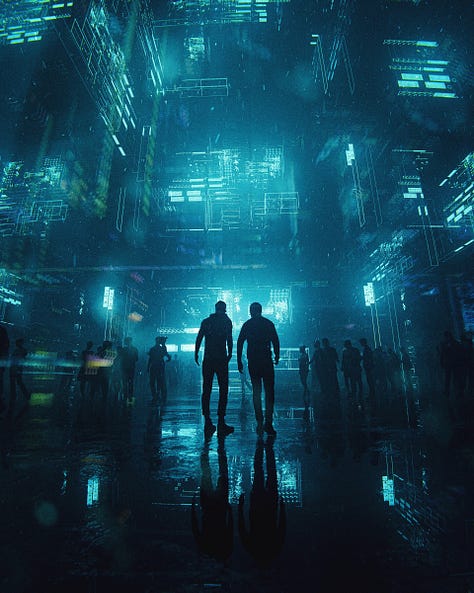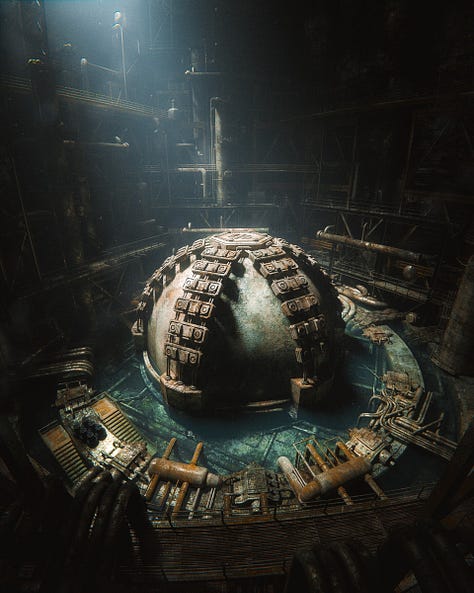In 2023, companies are slowly making the push to drive 3D artists back to the big studios. Pixar is now in the studio 4 out of 5 days a week. Disney Animation is getting people back in the office on a regular basis and Blizzard has always been staunchly on the side of ending their work-from-home processes as fast as possible.
More and more companies are taking the lead and how are they justifying it? It’s always statements along the lines of…
“We work in a collaborative craft and we need to be together.”
“Here, we are all about our company culture. We need to be together to make that culture flourish.”
“What about the vibes? Did you hear me!?!?! THE VIBES!!!!!!!”
It’s all super soft and makes me feel like I’m taking crazy pills. Am I the only one that remembers what working in the office as a 3D artist was like? All the blinds were closed and the lights were off so you didn’t get light contamination or your screen and mess up your colors. Everyone stayed as quiet as they could while wearing massive headphones to not annoy one another. It was so extreme that I knew a guy that was got in hot water because he yawned too loudly.
Let me say that again. He. Yawned. Too. Loudly.
Then there are actual logistics of getting to and from work during rush hour. Everyone sitting in traffic and missing trains and all the stress of trying to get somewhere after work.
If you were in the industry prior to the pandemic…I don’t think I need to go on further.
But lately, I’ve had an epiphany. I have figured out why this debate drives me crazy. It’s because no one is discussing the things you actually do in these locations. All of your roles and responsibilities and tasks at work are just lumped under one label of “your job.” And you are either to do “your job” at home or “your job” in the office. And in reality, there are parts of the job that are better done in isolation and others done in collaboration.
So why don’t we take advantage of that? Why do we give people the same roles and responsibilities in both locations?
Here is my approach:
When Working Remotely
Deep Dive Tasks
The A1 thing we do as creatives is deep dive tasks. Whether we are sketching, writing, modeling, texturing, lighting, compositing, rigging, or whatever…these are long tasks that require chunks of time on a dedicated task. Meetings, notifications, or any type of distractions can be dire in these situations since we need the time and space to take a large bite out of our tasks.
Collaborative work environments are killer for these types of tasks. This is why writers escape to cabins in the woods. To ease the distractions and allow for the time and space to truly be creative.
Daily Reviews
This one will depend on the specific company, but in my experience at large companies…dailies are done much better via Zoom than in person. For those that don’t know, here is a rundown of typical dailies…
All the artists on a team are called into a screening room. You sit in the dark, facing the same direction, focused on a giant screen. A person in production will play all the shots for that day’s review and the director, art director, supervisor, or whomever will give notes for the artist to work on. The artist goes back to their desk to complete their task.
Seems pretty straightforward, right? Why would we want to make these remote? So glad you asked. Allow me to switch to bullet points.
Oftentimes, there aren’t enough screening rooms in an office to accommodate all the teams needing to conduct reviews at a certain time.
The rooms aren’t always large enough and people are left standing along the walls or in the doorways just to hear the notes.
The people giving the notes tend to sit front and center while everyone else gathers behind them. This creates almost a hierarchy to the room that isn’t great for collaboration.
This body positioning of everyone facing the same way can make it very difficult to hear notes delivered.
Notes are often missed or misinterpreted because of this.
And artists often spend 30 minutes to an hour sitting in these rooms waiting for their work to be shown. Time they could have used working on their shots.
So how does conducting daily reviews remotely fix this?
There is never a problem of room size or availability.
The meetings can be recorded in case a note is missed or needs reexamining.
Audio quality is the same for everyone.
Everyone has the same size window so there is no hierarchy.
Artists are at their computers and can continue to be productive while rounds are taking place.
Other Zoom Meetings
If you are meeting with clients or outside vendors, it is so much easier to do that remotely. You don’t need to schedule time in some tiny booth to avoid annoying your co-workers in an open office (see yawning lion above.)
Plus, work wi-fi gets hammered with users and is notoriously unreliable. Doing all virtual meetings outside of an office is generally much better.
Other “One-Way” Meetings
Does your team ever have meetings where one person or a small group of people are delivering information to a team? Things like all-hand meetings and general announcements all fall into this category. These are such a pain in the office. Forget the lack of meeting room to hold everyone; these types of meetings can best be held remotely where everyone can see the visuals and actually hear the information being presented.
Social Life
Ok…this one might be controversial…but here goes. It is not an employer's responsibility to provide a space for you to meet people and be social every day.
As adult human beings, we should not rely on our workplaces to provide social interaction. Yes, we should have healthy work relationships with our co-workers, but as a society, we need to decouple the workplace as our main way to make friends after college.
Listen…I’m as guilty of this as anyone. Most of my best friends started as co-workers but you realize how quickly a layoff or pandemic can take those social networks away. We need to normalize finding our friendship groups through common interests, religious groups, sports teams, neighbors, or wherever else to help us maintain a strictly professional relationship with our workplace.
When Working In Person
Collaborative Work Sessions
Ok…so this is the big one. Yes. I agree with those who say we work in a collaborative environment and collaboration is better in person. So let’s do it! Let’s make office time mostly a dedicated time for individuals to come together and work together on something great.
Schedule long meetings in design rooms where creatives can hash out an amazing new character. Dedicate a day for the storyboard artists to all pitch their ideas and give feedback until a solution is reached.
But these sessions are only successful if everyone involved is bought in and dedicated to the task at hand without being distracted by outside issues.
This is the main point where working in person has its most benefit.
Performance Reviews
Meetings discussing an individual’s goals and salary are best done in person. These are personal and can often be difficult and that human interaction is important here. You want to be able to make that eye contact with someone if you need to have a conversation with someone that will have real consequences on their lives.
Celebrations
When you accomplish something as a group, you need to get everyone together to celebrate. Early on during COVID, we all tried the trivia nights and zoom birthdays, which were awful.
So when it’s time to celebrate an accomplishment, get people together, clink your glasses, give each other a well-deserved high five and enjoy each other.
Have you had your own epiphany!? Let me know in the comments below.
3D News of the Week
A roundup of interesting 3D related news you may have missed this week.
Autodesk Releases Maya 2024 - 80.lv
Introducing Spline AI - spline.design
Generating 3D models and meshes from text prompts? We asked Shutterstock about its team-up with NVIDIA - beforeandafters.com
Real-world tracking of objects in 6 degrees of freedom - LinkedIn post
What is CAD? - Shapr3D
5 Key Features in Blender 3.5 - cgchannel.com
3D Artist of the Week









3D Tutorials
3D Job Spreadsheet
Link to Google Doc With A TON of Jobs in Animation (not operated by me)
Michael Tanzillo has been a Senior Artist on animated films at Blue Sky Studios/Disney with credits including three Ice Age movies, two Rios, Peanuts, Ferdinand, Spies in Disguise, and Epic. Currently, Michael is a Head of Technical Artists with the Substance 3D Growth team at Adobe.
In addition to his work as an artist, Michael is the Co-Author of the book Lighting for Animation: The Visual Art of Storytelling and the Co-Founder of The Academy of Animated Art, an online school that has helped hundreds of artists around the world begin careers in Animation, Visual Effects, and Digital Imaging.
www.michaeltanzillo.com
Free 3D Tutorials on the Michael Tanzillo YouTube Channel
Thanks for reading The 3D Artist! Subscribe for free to receive new posts and support my work. All views and opinions are my own!








